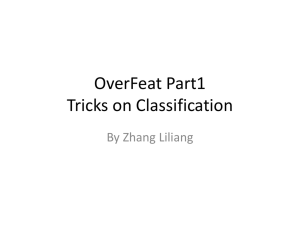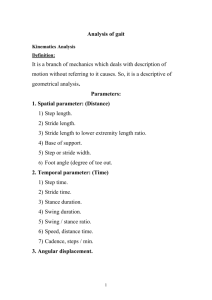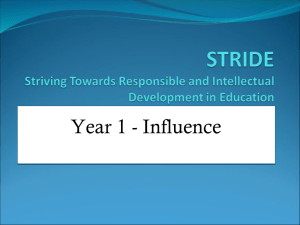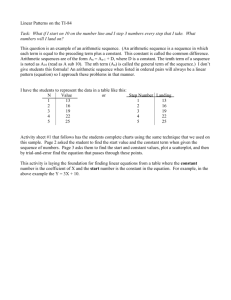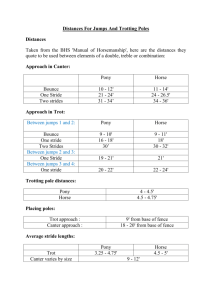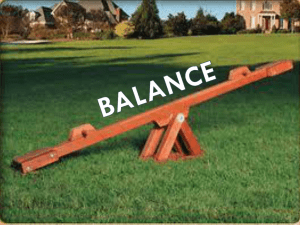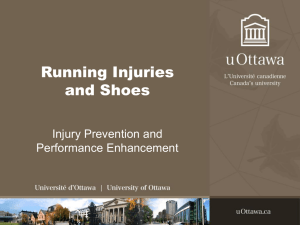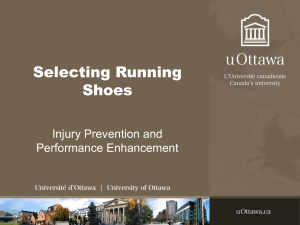Biomechanics - High Peaks Elite Distance Camp
advertisement
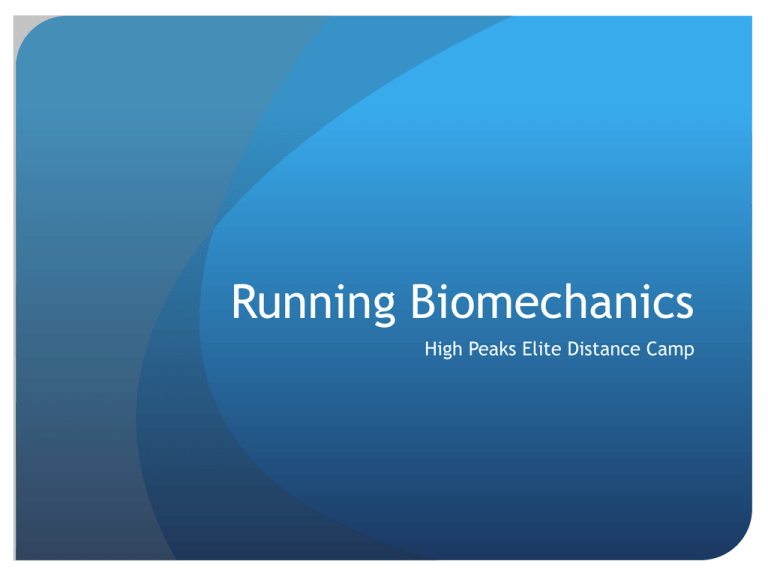
Running Biomechanics High Peaks Elite Distance Camp Correct Running Stride 90-93 steps per minute (one foot) Foot landing under center of mass Landing on middle to forefoot of shoe Incorrect Running Stride Less than 90 steps per minute (one foot) Negative Results: Over-striding, too much time airborne, wasted energy fighting gravity, harder pounding of joints, greater chance of injury Landing on heal of foot (“breaking” forward movement… wasted energy!) Not landing over center of mass, pushing mass in a negative/backwards direction… wasted energy! Running Mechanics Biomechanics: A study of motion Purpose of studying biomechanics: Distance running is a natural activity, so many coaches and athletes give little or no thought to technique From our evolution (crawling- walking- running) rarely has anyone been instructed on how to run properly There is a right way to run, yet we often abide by the philosophy “if it works don’t fix it.” Running styles are highly individualized, but subtle mechanical changes can make a difference in a race or in preventing injury “Lingo” of Running Mechanics Specificity in Training: A focus and direction where practices prepare for maximum racing performance (ex. Workouts must include racing speeds) Effectiveness: Maximum benefit from energy expenditure (ex. All out sprint, trying to minimize the elapsed time) Lingo continued Efficiency: Maximizing conservation of energy expenditure (ex. Running 5:00 mile with minimum effort). In other words, ECONOMY Linear Motion: Motion in a straight line Speed (velocity) variables: A distance traveled in a specific amount of time (stride length x stride frequency) Lingo Continued Center of Gravity: Where an object’s mass is considered to be concentrated Acceleration: A positive rate of change in velocity or speed Laws of Motion: 1) Inertia (body at rest stays at rest) 2) Momentum (change in direction same as force) 3) Action Reaction (every action has equal reaction) Distance Running Style Posture: “Run Tall” Eyes and head Shoulders “relaxed” Arm position and motion- “natural” carriage Hips alignment- straight ahead Distance Running Style Stride: Knee strike and stride angle Foreleg swing/forward swing Stride length- level head Foot strike: heel striker, forefoot striker Back swing, toe off, extension phase Variables that Affect Running Style Individualization/Coordination Strength/Endurance/Maturity Fatigue/Stress Footwear/Orthotics ***Work on mechanics when stressed Proper Form Upper Body: Run Tall or Proud: Head & eyes looking straight ahead Head still; neck and head in a straight line Chest and shoulders proud Arm drive Arms relaxed <90 degree angle moving forward and back in synchronization with opposite leg Tight tummy Proper Form Lower Body Hips tucked forward Good knee drive Mid to high heel recovery Dorsi-Flexion in ankle Mid to Forefoot landing under center of mass Legs moving front to back, not crossing over midline Poor Running Form Upper Body: Hunched over, bent at the waist, leaning too far back Head tipped back/forward/down, shoulder roll Arms excessively crossing midline No arm drive, arms locked <90 degree position Lower Body: Butt sticking out, little/no heel recovery, overstriding Landing on heel, not landing over center of mass Feet crossing midline, over/under striding Running Form Evaluation Checklist I) Non-stressed Running Style: Overall General Appearance Relaxed, Tall, Upright, Efficient Center of Gravity (Support Phase) Foot Strike Knee Position Hip Posture Torso Posture Arm/Shoulder Carriage(shoulder, arms, elbow-wrist, hands) Head and Neck Position II) Stress Running Form Analysis

